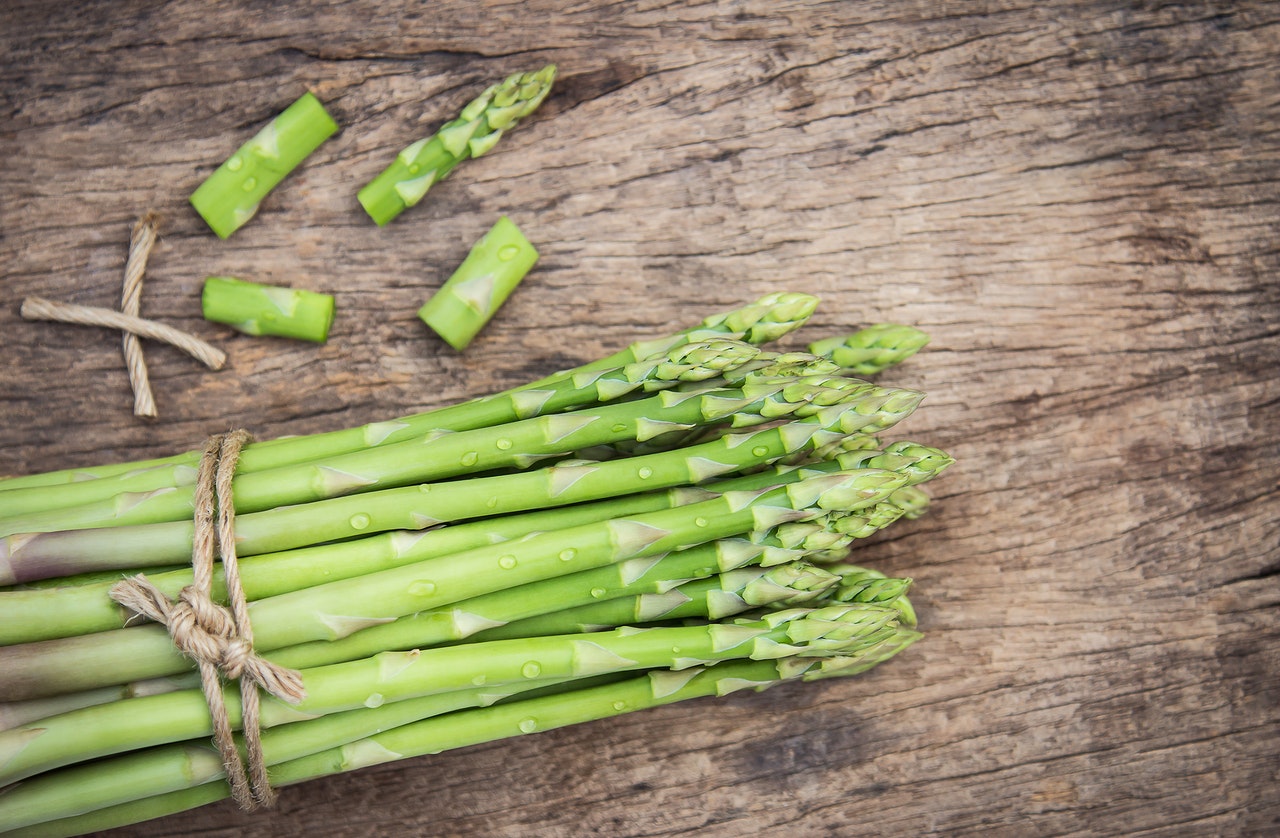How do you clean and cook asparagus?
The humble asparagus, which also happens to be called sparrow grass, is a perennial flowering plant in the genus Asparagus. The shoots of the asparagus are consumed as a vegetable and are considered a staple vegetable in many parts of the world.
Asparagus is native to many parts of Europe and in temperate regions like Asia. What passes off as leaves to consumers are called cladodes or modified stems that are clustered around the central axis of the vegetative part of the plant in a rose-like orientation.
The tender tips of the asparagus are fully edible, but a portion of the stem has to be removed because it is usually tough and hard to eat.
To begin cleaning asparagus, check first if the asparagus is good for eating by slightly bending the tips. If the tips of the asparagus are supple and easy to bend, then the asparagus is ready to prepare. Grab your knife and cut off an inch or so from the base of the asparagus. This is the woody part of the asparagus that is difficult to eat.
Next, peel off the outer sheathing of the asparagus with a peeler. Start near the tip of the vegetable, and just let the blade slide away from you. Continue peeling until you have rotated each asparagus completely. The outer layer is also tough to chew and should be removed unless you are eating very young asparagus.
Mature asparagus that are about half an inch thick should be cleaned in this manner. To ensure an even cooking time for all of your vegetables, cut away the ends so all of the asparagus is of even length. No need to throw away these pieces as they can also be cooked alongside the main bodies of the asparagus.
How to Cook Asparagus on Stove
The simplest way to prepare asparagus on the stove is by blanching it. Place the asparagus spears on a saucepan or pot and fill with a small amount of water. The amount of water will depend on how much asparagus you have and how thick the asparagus spears are. Turn on the stove and blanch the vegetables for three to five minutes.
After blanching, prepare a bowl of ice cubes and water and place the asparagus spears in the iced water. The ice bath will shock the asparagus and bring down the inner temperature to halt the cooking. This will ensure that the asparagus will not be overcooked and will remain tender but crunchy to the bite, which is what is ideal for this type of vegetable.
Blanched asparagus may be added to a salad, or served on its own as an asparagus salad. Feel free to season and add dressings of your preference before consuming. The simplest dressing is extra virgin olive oil and some coarse salt.
The natural flavors of asparagus usually stand up well on their own, so there is no need to over-season. Blanching asparagus spears is an excellent option if you want to cook a larger quantity of this vegetable so you can consume some now and store the rest for future consumption.
Place all of your excess blanched asparagus spears in a ziplock bag with a paper towel lining. The vegetables may either be refrigerated or frozen.
How to Cook Asparagus on the Grill
Grilling asparagus is fun and satisfying. Create an oval ‘pot’ with aluminum foil first. The simplest way to do this is to create an aluminum mold using a plate or shallow pan that fits the purpose.
The resulting aluminum mold can be placed safely on the grill. If the base of asparagus spears is thick, be sure to remove the wooden parts. Place the asparagus spears in the aluminum boat or dish and grill for a few minutes, until the vegetables are tender and ready.
Add one to two tablespoons of extra virgin olive oil and some coarse salt. Serve on the aluminum boat and enjoy it. The main benefit of grilling asparagus is that the moisture of the asparagus is retained and the flavors, too. You virtually cannot overcook your asparagus by grilling them, because you have an aluminum boat.
How to Sauté Asparagus
Sautéing asparagus is another stove-top method that produces great results. Asparagus can be sautéed on its own or combined with vegetables like butternut squash and sliced eggplants. Add a nub of butter (or two) to make the sautéed asparagus even tastier. Season your sautéed asparagus with some salt and then pepper, to bring out the flavors.
Feel free to add sauces like tomato sauce or chunky tomatoes to make the finished dish even more special. If you are simmering the asparagus spears with any sauce, be sure to extend the cooking time by five to six minutes so the sauce’s flavors will fully develop.
Sautéed asparagus may be added to dishes like pasta. It has been said that asparagus has a ‘meaty’ flavor that even meat lovers prefer, so be experimental with this vegetable, and you shall be fully rewarded for your efforts.
How to Cook Asparagus in the Microwave
This may come as a surprise to many home cooks, but microwaving asparagus is one of the best ways to cook it. This is also our preferred mode of cooking if you are in a rush.
After cleaning and trimming the asparagus, bundle them together with a thick wad of paper towels. Moisten the paper towels with some water (but not so much that they fall apart). Place the bundle of asparagus in the microwave and set the microwave oven on high for three minutes.
After three minutes, pull out the bundle with a pair of tongs and remove the paper towels. Season the asparagus with salt, pepper, butter, and whatever else you like on your asparagus. Get ready to chow down!

